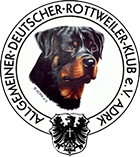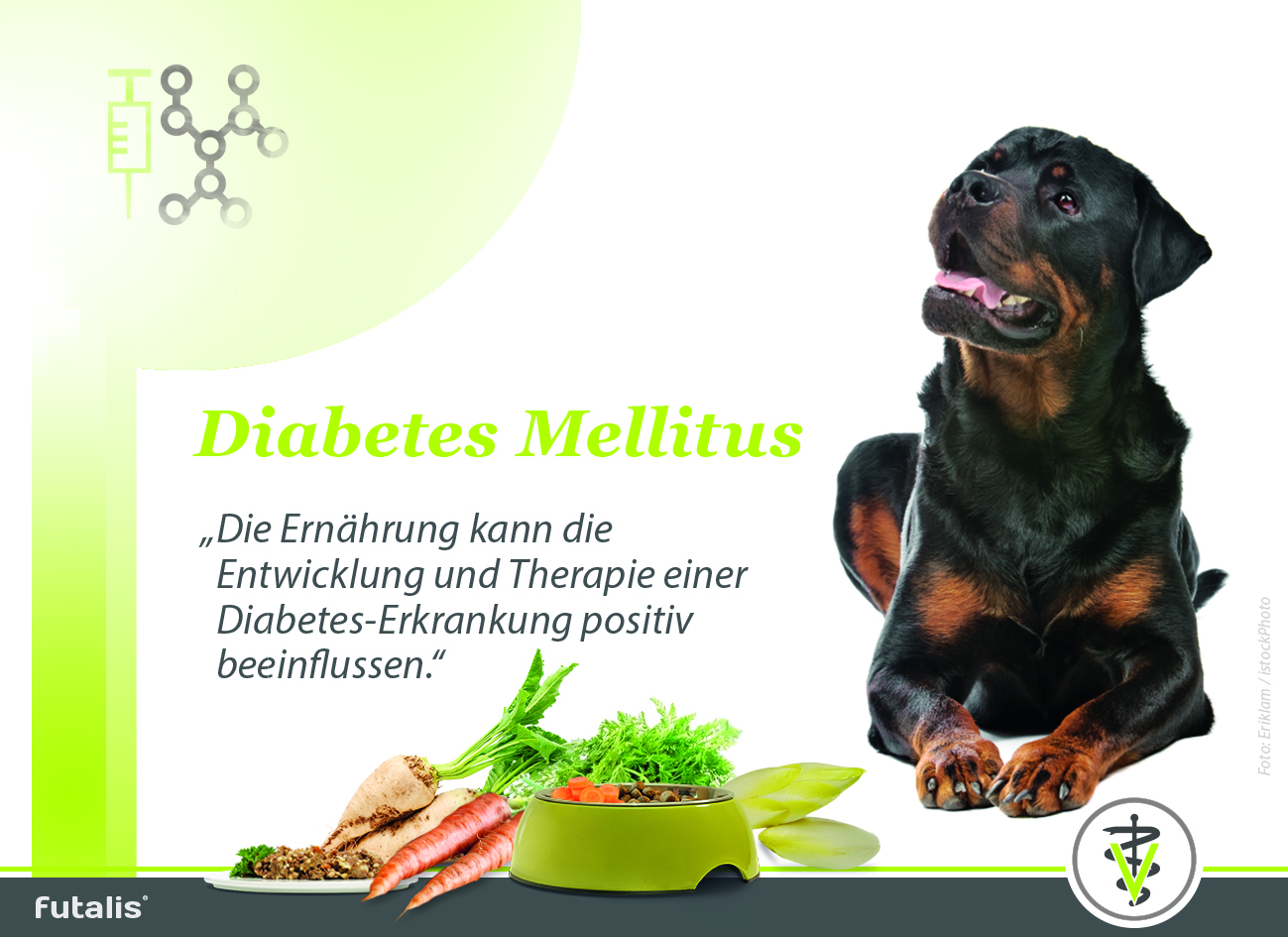| ADRK |
| Allgemeiner Deutscher Rottweiler-Klub e.V. |
Diabetes mellitus: a complex disease with special nutritional requirements
Diabetes mellitus is also known colloquially as diabetes. Due to a lack of insulin, glucose can no longer be absorbed into the cells to a sufficient extent, resulting in an increase in blood glucose levels, which is accompanied by various clinical symptoms. In this issue, you will find out what influence diet can have on the development and treatment of diabetes.
What causes diabetes?
Statistically, around 0.5% of all dogs suffer from diabetes mellitus. The majority of these dogs are overweight, but there are other factors besides obesity that influence the development of diabetes. In addition to hypothyroidism and other hormonal disorders, stress and genetic factors can also be involved, but the main underlying problem with diabetes is, as already mentioned, obesity.
Insulin is a hormone that is normally produced by specialized cells in the pancreas and ensures the correct uptake of glucose into the target cells of the body. If there is an insulin deficiency, glucose uptake into the cells is reduced accordingly and the blood sugar level rises (hyperglycemia). Diabetes mellitus can occur in two forms. Type Ⅰ diabetes occurs when the cells of the pancreas do not produce enough insulin. This is the most common form of diabetes in dogs (around 70 - 80 % of patients). In the case of type Ⅱ diabetes, although enough insulin is produced, the cells do not respond to the insulin due to a change in the insulin receptor, which means that here too there is insufficient glucose uptake into the cell with the already known consequences for the blood glucose level.
Symptoms
The symptoms that occur in diabetes mellitus are essentially associated with hyperglycemia. Due to the persistently high blood sugar level, an increased amount of glucose is excreted in the urine, which also leads to increased urine production. In order to compensate for the increased loss of fluids through the urine, the dog must also drink more water. The increased water intake and increased urine output are usually the first clear signs of a disease. In the advanced stage, the lens may become cloudy and kidney and nerve damage may develop. An elevated blood sugar level is particularly noticeable in the blood count. However, the blood glucose level can be elevated due to many causes, so that a single measurement is usually not meaningful, especially as blood glucose is subject to natural fluctuations over the course of a day. If diabetes is present, repeated measurements will also show elevated values; alternatively, the fructosamine value (so-called long-term sugar value) can be used.
Therapy
Diabetes mellitus is primarily treated by administering insulin. The insulin can be administered as a tablet or injection, depending on the severity of the disease, the ease of handling the medication and the dog's willingness to cooperate. In animals, daily insulin injections by the pet owner are still the most common option. In addition, changing the diet is an important part of therapy for almost every diabetes patient.
The most important goal when feeding a diabetic patient is to achieve the lowest possible and most even glucose concentration in the blood after feeding. In order to achieve this, a ration must, in addition to the criteria mentioned below, above all have a constant ration composition. Constant fluctuations in the composition of the feed and its nutrients are therefore unsuitable and should be avoided. Feeding over several small meals helps to reduce the glucose flood in the blood. For most diabetics, dividing the daily ration into two meals about 12 hours apart has proved successful. In some cases, however, a further division is necessary. Because the body adapts to the regular intake of food, it is particularly important for a diabetic dog to stick to fixed feeding times.
As diabetes is usually associated with obesity, achieving the ideal weight in a timely manner is a crucial cornerstone of therapy. In many cases, successful weight loss can also significantly improve blood glucose levels and thus reduce the amount of insulin administered. Depending on the individual situation, it may even be possible to do without insulin completely. However, in order to achieve weight loss, a dog suffering from diabetes should not simply be put on a zero diet, i.e. completely deprived of food. Instead, a reduction diet should be used that is in line with the particular requirements of the patient.
Sugar is absorbed very quickly from food and leads to a sharp rise in blood sugar levels. Feed for diabetics should therefore not contain simple carbohydrates such as glucose. Naturally, all sugary snacks should also be avoided. In contrast, complex carbohydrates such as starch are also tolerated comparatively well by diabetic dogs. Complex carbohydrates first have to be broken down by the body, resulting in a slow, steady rise in blood sugar.
Fiber plays a key role in the diet of diabetes patients. Fiber reduces the absorption of glucose from the intestine and thus ensures a slow, controlled rise in blood glucose levels after food intake.
Fat can be used very well as an energy source for diabetic dogs, as it is generally tolerated without any problems. However, as fat has a high energy content, the proportion in the ration must be reduced accordingly for overweight dogs.
The substance L-carnitine has an influence on fatty acid metabolism. It supports the production of energy from fatty acids and protects the skeletal muscles from breakdown during weight loss.
The protein content of the ration must at least meet the dog's requirements, but may also be slightly higher. Especially when dogs are in a poor nutritional condition, the protein content of the food should be increased. An increased protein content also increases the acceptance of the food so that the ideal weight can be reached again more quickly.










